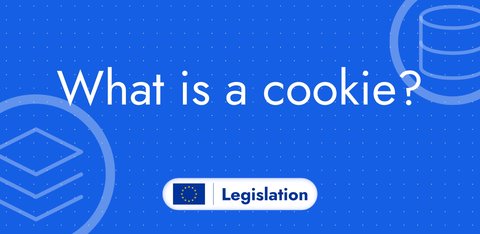Google Consent Mode V1 and V2
Updated: Thursday, January 25, 2024
Digital landscape evolutions in 2024
In 2024, two major evolutions will change the face of the web as you know it today. The first evolution is recent progress in artificial intelligence, unlocking new possibilities for marketers.
The second major evolution is the end of 3P (third-party) cookies in Google Chrome.
These evolutions are necessary to maintain a balance between - 1. transparency in the collection and processing of user data - 2. marketing performance, which is the fundamental objective of marketers.
In 2024, you’ll need to go through 2 main components to develop the digital part of your business:
- high-quality data collection with user consent
- artificial intelligence (conversion measurement, attribution, audiences, modeling).
From March 2024, the Digital Markets Act (DMA) will require new obligations from large digital companies operating in the European Economic Area (EEA) (known as gatekeepers).
4 recommendations from Google (from March 2024 and so on)
Collect user consent (for traffic originating from the European Economic Area and the United Kingdom) in compliance with the Google EU User Consent Policy.
Migrate to Google Analytics 4 if you’re still using Universal Analytics 360 (remarketing, audiences, conversions, bid optimization).
Set up Consent Mode to communicate consent signals to Google’s advertising platforms (for online data).
Update the Google APIs you use to send offline data
What is Consent Mode V1?
Consent Mode is a tool offered by Google that allows the user’s consent to be communicated to Google tags.
Depending on the consent given, Google tags adapt their behaviour, enabling Google to comply with regulations and activate data modeling to limit the impact of lost conversions due to lack of consent.
In its first version, Consent Mode contains 2 consent signals in the consent state:
| Consent signals | Associated rights |
|---|---|
analytics_storage | Read and write analytics-related cookies |
ad_storage | Read and write advertising-related cookies |
What is Consent Mode V2?
Consent Mode V2 contains 2 additional consent signals, making a total of 4 consent signals in the consent status. This update offers greater granularity between the consent given and the data processing carried out.
| Consent signals | Associated rights |
|---|---|
analytics_storage | Read and write cookies related to analytics |
ad_storage | Read and write cookies related to advertising |
ad_user_data | Send user data to Google Ads |
ad_personalization | Create remarketing audiences |
From March 2024, you’ll need to send these 4 consent signals in the consent state to benefit from all the features associated with Google products (Google Analytics 4, Google Ads, Floodlight).
User journey example
- Alice clicks on a Google Ad and lands on your website
- Consent state is communicated to Google tags
- When all consent signals are
granted, Google will collect data as normal. If one or more consent signals aredenied, Google tags will adjust their behaviour (or not trigger at all in the case of basic mode, which we’ll see later on). - Google uses data modeling to optimize reporting and performance.
Basic VS Advanced mode
Advanced mode
Advanced mode was the only existing mode Consent Mode V1. In this mode, Google tags adjust their behaviour according to consent signals.
| Consent signal | granted | denied |
|---|---|---|
| analytics_storage | Read and write analytics-related cookies | Cookieless ping requests are sent |
| ad_storage | Read and write advertising-related cookies | Cookieless pings are sent |
| ad_user_data | Enables user data collection | Disables user data collection |
| ad_personalization | Enables remarketing audiences | Disables remarketing audiences |
Remarketing features require both ad_user_data and ad_personalization to be granted.
Basic mode
Basic mode was introduced with version 2 of Consent Mode.
In this mode, Google tags are blocked by default.
If the user does not consent, no tags are triggered and no data is shared with Google (not even the consent status).
If the user gives consent, Google tags will behave normally.
| Consent signals | granted | denied |
|---|---|---|
| analytics_storage | Read and write analytics-related cookies | No requests are sent, the tag is blocked |
| ad_storage | Read and write advertising-related cookies | No requests are sent, the tag is blocked. No data is collected. |
| ad_user_data | Enables user data collection | |
| ad_personalization | Enables remarketing audiences |
Remarketing features require both ad_user_data and ad_personalization to be granted.
Modeling with Consent Mode
When you can’t track conversions from users who haven’t given their consent, Google’s algorithms and advertisers will have less data to make strategic decisions.
But this is before modeling kicks in.
According to Google, Consent Mode, and by extension modeling, can recover an average of 65% of customer journeys (without consent) that have clicked on an ad and converted.
This enables advertisers and Google’s algorithms to identify the best-performing campaigns.
The signals used for modeling are:
- device type
- conversion type
- country
- time of day
- browser
Implement Consent Mode V2
Option 1: You use a certified CMP
Contact your CMP and ask for documentation on Consent Mode V2.
Option 2: You’re NOT using a certified CMP
Contact your CMP and ask whether Consent Mode V2 has been implemented in their solution. And if so, ask for a documentation.
Option 3: You have an in-house solution
If you are using a custom tag template on Google Tag Manager, you will need to add the consent signals ad_user_data and ad_personalization using the APIs setDefaultConsentState and updateConsentState.
